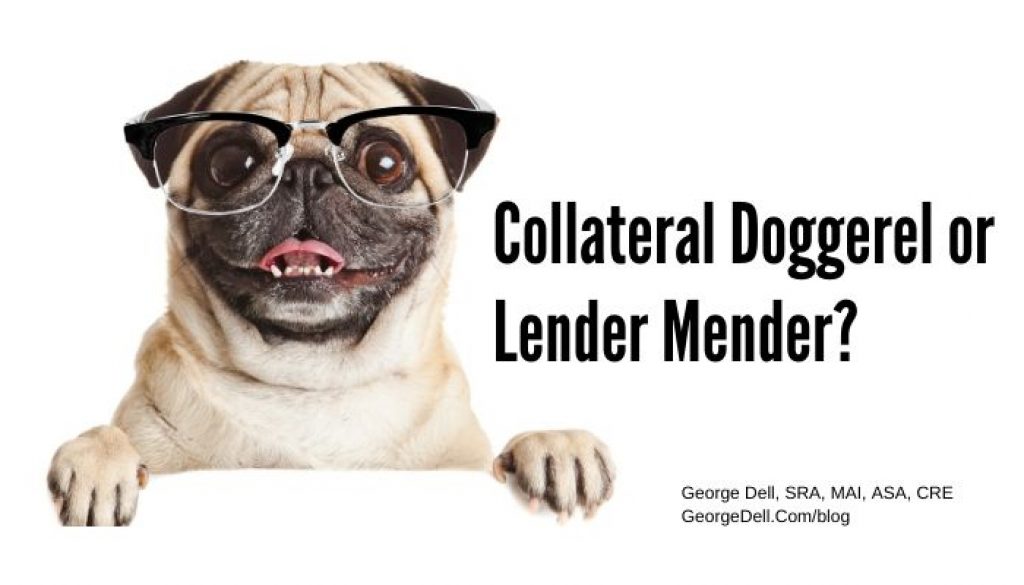Doggerel is defined as “a comic verse of irregular measure.”
It seems we have three possible types of collateral assurance:
- Appraiser judgment
- AVM proprietary algorithm
- Evidence based data science
The first relies on subjective appraiser judgment of “comps.” The second relies on secret proprietary algorithms. The third combines the most robust and most useful information possible. Let’s look briefly at each of these:
The appraiser valuation process is a set of procedures an appraiser follows. The analysis starts with the appraiser selecting a handful of the “best comps.” These comparables are to be similar, competitive, and comparable to the subject property. The process then suggests three approaches. Often two of these three approaches are discarded right away, or are minimized in the final reconciliation. Under USPAP (Uniform Standards of Professional Appraisal Practice), the judgment can only be provided by an appraiser. Appraisers are licensed by the many states.
The Automated Valuation Model (AVM) is really not a model at all. It’s an industry which provides predictions of value, by a set “black box” algorithm, or “grey-box” deep learning machine. There’s no human judgment involved. There’s no human information enhancement involved. It’s “automated.”
The Evidence Based Valuation© (EBV) paradigm is the next step in collateral assurance, investment analytics, portfolio management, and risk assessment and allocation. EBV© combines the best and eliminates the worst doggerel of traditional appraisal and the black box AVM.
The Core Concepts
The core concepts of this paradigm are simple, optimizing the brain/machine team:
- Problem identification includes both professional judgment and computation.
- The data set is optimized to match the competitive market segment.
- Predictor variables (elements of comparison) are algorithmically identified.
- Output is more than just market price, but can include macroeconomic inputs to include fundamental (intrinsic value), forecast value, reliability score, and real-time revaluation.
- Pricing is related to the reliability desired, not “lowest bidder” or “highest value.”
- Turnaround time is minimized, by leveraging the human input.
A number of forward-looking appraisers are finding a new competence. The delivery product includes risk/reliability scoring and other decision aids (as listed above). These concepts are the core of the Valuemetrics.info classes, Stats, Graphs, and Data Science. Given the right tool, (today’s vastly superior open-source suite of products) this is readily possible.
Are there lenders, investors, and regulators out there who would like this superior input?
I believe there must be. But their underwriters, review auditors, and decision makers must also be familiar with what’s possible. It is possible.
It’s my hope and intention to bring together appraisers competent in Evidence Based Valuation© – with lenders and investors who genuinely want to sharpen their market edge, provide a superior community service, and align their profit maximization with the public good. Less doggerel, more data science.

November 22, 2017 @ 8:49 am
an appraiser had valued a home
and the report was thick as a tome.
when asked what he’d found
in the book he had bound
he replied, “all that I saw when in Rome,
and the lender paid for reports by the pound.
and that’s the tail that wags the doggerel
a joyful day of thanks giving to one and all!